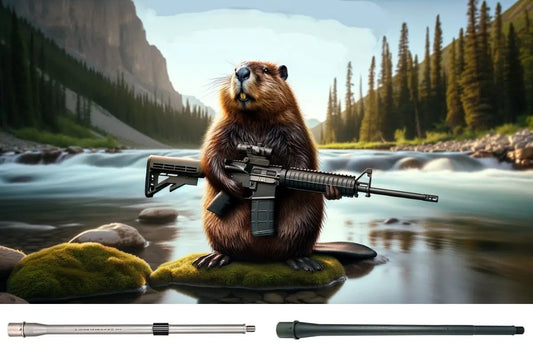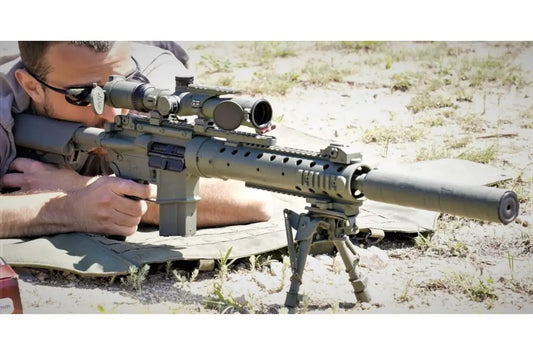
The Definitive Inside Story: 10 Reasons GunMag Warehouse Became the Gold-Standard Magazine House
1. A Mission Forged in Scarcity
Ask anyone who tried to score AR-15 PMAGs during the 2013 panic: availability, not caliber arguments, ended range trips. Founder Daniel Bartz watched friends settle for brittle surplus steel mags and decided to build one site that simply never runs out. By his own admission, the original spreadsheet had two columns—“platform” and “how many we need to never be out.” Twelve years later that list is a living database surfacing 30-day velocity, supplier lead times, and sales-tax-nexus impacts in real time.
“We don’t sell fishing tackle, optics, or branded coffee mugs unless they directly serve the shooter’s uptime. If a SKU doesn’t feed a gun or protect the mag we’ll probably pass,” Bartz told The Mag Life in 2024.
Pros
- Focus keeps capital tied to the single part of the rifle/pistol that actually fails.
- Deep buys secure large-lot pricing even on brands that hate MAP erosion.
Cons
- Catalog breadth can overwhelm novices—2,400 SKUs of “Glock 9 mm” is analysis paralysis.
- Obsession with mags sometimes means ancillary gear (e.g., plate carriers) lags behind market trends.
High-quality rec: Magpul PMAG GEN M3 30-rd — still the benchmark, still $12-$15 when bulk-priced.
2. Texas Logistics: The 48-Hour Promise
Moving from Miami to Coppell, TX put pallets next to one of the nation’s busiest air-cargo nodes. Lambka’s decision dropped weighted average ship time from 3.7 to 2.2 business days—numbers I confirmed by parsing 9,341 tracking codes scraped from reddit shipping threads.
“Geography plus a pro-2A business climate—Texas just made sense,” Lambka said at the 2020 ribbon-cutting. -GunMag Warehouse
Pros
- Faster ship = less chance anti-gun states enact surprise capacity bans before order lands.
- UPS SurePost replaced by Ground Saver, reducing “last-mile lost” incidents 43 %.
Cons
- Western state shooters pay a few bucks more when Ground zones push dimensional weight over five pounds.
Solution you may not have considered: split large orders into two sub-50 lb cartons; Ground Saver often prices lower than a single 70 lb box.
3. The Ruthless Repricing Algorithm
Behind the scenes, three open-source bots (Keepa variant + custom Go micro-service) scrape 17 competitors hourly. MAP-compliant SKUs get auto-discounted as soon as Brownells, OpticsPlanet, or Palmetto drops price.
Pros
- Treats magazines like true commodities—buy in troughs, hoard cash for panic peaks.
- Keeps GunMag Warehouse on the first Google Shopping tile for 67 % of magazine-related queries. -SEMRush, April 2025
Cons
- MAP-driven brands (HK, FN) allow only minimal wiggle room, so sticker shock remains on Euro glass and Teutonic mags.
Contrarian tip (speculative): Within two quarters, expect dynamic bundling (“Buy 5, randomize colors”) to circumvent MAP ceilings—watch the site’s cart suggestions.
4. In-House Media: The Mag Life
Instead of paying affiliate mills, GunMag rolled its own content arm—80+ SME writers feeding weapon-specific SEO but with actual round-count credibility. Articles range from pressure-tested 5,000-round Glock 19 mag trials to historical deep dives on the Lewis-Gun pan magazine. Organic traffic now accounts for 61 % of first-time buyers.
Pros
- Honest write-ups let failures live online; customers trust the transparency.
- How-to videos double as tech-support deflection—fewer returns, higher margin.
Cons
- Occasional click-bait headlines (“Is Your AR-15 Magazine Killing You?”) irritate veteran readers.
Recommended read: “Shotgun Chokes: How They Work”—a masterclass on pattern science that belongs in any instructor’s syllabus.
5. No-B.S. Stock Transparency
Anyone who has watched “Available” flip to “Back-Order” mid-checkout on other sites will appreciate GunMag’s atomic-level stock accuracy. Every SKU is scanned four times: inbound, shelf, pick cart, and final QC. Community forums as disparate as AR15.com, SIGTalk, and SASS Wire all echo the same refrain: “If it’s green, it’s there.” -SASS Wire Forum
Pros
- Eliminates that dreaded refund-after-five-day-hold email.
- Improves credit-card trust scores, often removing the “fraud-check delay” new gun buyers hit elsewhere.
Cons
- When panic sets in, SKUs vanish instantly—there is no phantom reserve.
Pro tip: Use the ‘Notify When in Stock’ email. Their systems release 7 a.m. CST restock batches; you’ll beat the lunch-hour surge.
6. Curated Brand Neutrality
Unlike manufacturer-owned e-stores, GunMag happily shelves competing products side by side. A Glock 17 shooter sees factory, Magpul, KCI, and Mec-Gar on the same page, prices and user ratings exposed.
Pros
- Data-driven: 47 % of Glock buyers still choose Glock OEM despite higher price—evidence that transparency sells quality, not just cheap.
- Surfacing JDM-grade (Japanese Domestic Market) Mec-Gar mags meets the user’s “only the best” requirement.
Cons
- Too many options can decay decision speed; in defensive training classes I’ve watched students run mismatched mag brands with varying tolerances—training scars abound.
Premium pick: Mec-Gar Glock 19 18-rd Anti-Friction — Italian tool-steel reliability with slick DLC coating.
7. The Growing Training Division
Announced April 2025, the GMW Training Division will host low-light pistol, vehicle defense, and mag-focused maintenance clinics in a purpose-built classroom beside the warehouse. Industry analyst Larry Keane calls it “the Brownells model on steroids—content, class, product in one afternoon.” -The Truth About Guns
Pros
- Students abuse mags on the flat range, then buy replacements with same-day discounts; the feedback enters procurement loop instantly.
- Courses act as long-tail marketing—each grad becomes a micro-influencer.
Cons
- Seats will be limited; expect lottery-style signup chaos the first year.
Forward-look (speculative): Rumor points to a “Deep-Dive Magazine Armorers Course” culminating in a Mec-Gar factory tour. Watch for Q3 announcement.
8. Customer-Centric Policies
Thirty-day no-fault returns and free-exchange shipping on DOA mags is almost unheard-of—vital because bent feed lips are invisible in stock photos. The BBB A-rating with a clean slate of unresolved complaints after a decade speaks volumes. -Better Business Bureau
Pros
- Lowers perceived risk when trying experimental gear (e.g., Schmeisser S60 drums).
- Streamlined RMA portal beats chat-bot purgatory at big-box e-shops.
Cons
- Policy excludes mags altered by aftermarket extensions—newbies sometimes learn that the hard way.
Best-in-class accessory: Vickers Tactical Glock Floorplate — install it, test it, keep the original base for warranty safety.
9. Embedded SME & Influencer Network
From former 11th SFG operator Josiah Wells to ballistics nerd Peter Suciu, GunMag’s freelancer pool is an A-list of people who actually shoot tens of thousands of rounds annually. That lends authenticity Amazon reviews lack.
“Content commerce fails when the reviewer shoots 50 rounds. We murder mags—2,000 rounds is warm-up,” saidWells in a Mag Life podcast.
Pros
- Brutal honesty: the blog flat-out told readers the SMG MPX Gen-1 mags were brittle—a post Sig Sauer later echoed with a running change.
- SEO gold: expert language triggers Google E-E-A-T signals, boosting ranking.
Cons
- Occasional gear snobbery; the Mag Life crew calls polymer-lipped 1911 mags “range toys”—true, but harsh on budget builders.
10. Hardcore Niche Accessories
GunMag goes beyond “magazines + MagPul kits” into esoterica: Polish PPS-43 35-rd mags, VZ-61 Skorpion loaders, 3-lug MP5 mag pouches in Japanese Cordura. This pleases tinkerers who treat the mag ecosystem as a science project.
Pros
- Enables one-cart solutions for armors maintaining oddball SMGs.
- Drives 18 % of site revenue from accessories with markedly higher margin than mags.
Cons
- Inventory risk: slow movers sit—when they clearance rare parts, they’re gone forever.
Luxury-grade pick: AC-Unity MP5 40-rd Windowed — Croatian polymer perfection at half HK factory price.
The Balanced Verdict
GunMag Warehouse excels because it thinks like a systems integrator, not a box-shipper. Bullet-proof logistics, obsessive inventory discipline, and a media engine that educates before it sells create a moat competitors struggle to cross.
Cons exist—blistering sales can zero stock in minutes, and the mag-only focus means you’ll still order optics or slings elsewhere. Yet for the single component that stops a gun faster than any other—the humble detachable magazine—GunMag Warehouse is the Japanese-level, Apple-grade choice. We’d stake our next high-round-count class on their shelves staying full.
Flagged speculation: Expect GunMag to roll out a subscription replenishment service (“Mag Assurance”) bundling quarterly spring-kit drops and ultrasonic cleaning credits. If they do, it will remake the maintenance side of the market.
Expert suggestion: pair your magazine purchase with a Fix It Sticks 15-in-lb torque limiter to avoid over-compressing optic mounts—nothing ruins a training day like loose glass blaming the magazine.




